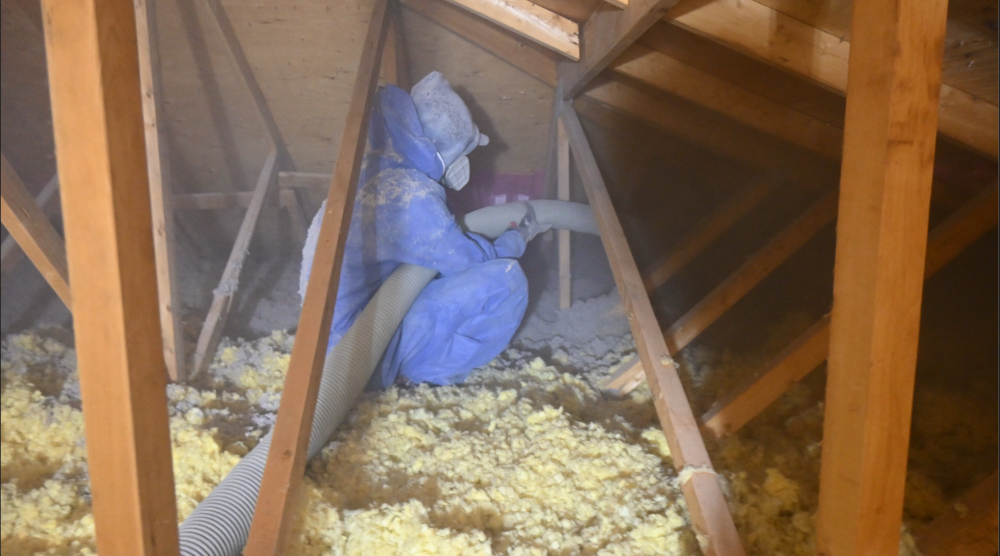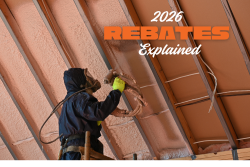Blown-in cellulose Insulation stands out for its exceptional environmental benefits in the ongoing dialogue about eco-friendly building materials. As the demand for sustainable construction materials increases, companies like Reitzel Insulation are at the forefront, championing blown-in cellulose as a preferred insulation method. This article explores the top environmental benefits of Blown-In Cellulose Insulation, emphasizing its efficiency, sustainability, and long-term value.
Top Environmental Benefits
Superior Energy Efficiency
Blown-in cellulose Insulation is renowned for creating a tight seal in building cavities, cracks, and crevices. This type of insulation is particularly effective in reducing energy waste, as it conforms closely to the spaces it fills, leaving no room for air leaks. Energy efficiency is crucial in reducing the carbon footprint of buildings, and cellulose insulation performs exceptionally well in this area. With its ability to minimize winter heat loss and summer heat gain, cellulose insulation ensures that heating and cooling systems use less energy, conserving natural resources and reducing greenhouse gas emissions.
Utilization of Recycled Materials
Among the best features of cellulose insulation, provided by companies like Reitzel Insulation, is its high content of recycled materials. Typically, cellulose insulation comprises about 85% recycled paper fibre, mainly sourced from post-consumer waste newspapers. Transforming recycled paper into high-quality insulation involves treating it with borates, natural minerals that impart fire and pest resistance. Using recycled content, cellulose insulation helps divert waste from landfills, contributing significantly to waste reduction efforts and promoting a circular economy.
Reduction in Greenhouse Gas Emissions
Blown-In Cellulose Insulation's production process is less energy-intensive than fiberglass or foam insulations. The energy required to manufacture cellulose insulation is significantly lower, directly translating to reducing greenhouse gas emissions. Furthermore, cellulose insulation contributes to lower carbon emissions throughout the building’s lifecycle by effectively reducing the need for heating and cooling in buildings.
Enhanced Indoor Air Quality
Cellulose insulation contributes to healthier indoor air quality by effectively controlling moisture and reducing the potential for mould growth. Unlike some insulation materials that can off-gas volatile organic compounds (VOCs), cellulose is relatively inert. This makes it an excellent choice for homes and buildings where air quality is a priority. Additionally, the borate treatment used in cellulose insulation provides added health benefits by deterring pests and preventing mould growth without harmful chemicals.
Sound Dampening Qualities
Besides its thermal properties, Blown-In Cellulose Insulation provides excellent sound-dampening benefits. The dense packing and the natural fibrous structure of the material allow it to absorb sound waves, thus reducing noise transmission between rooms and from outside. This feature enhances the comfort and usability of insulated spaces, making cellulose an ideal choice for residential and commercial buildings.
Longevity and Sustainability
Blown-in cellulose Insulation is not only efficient at the time of installation but also continues to perform over time with minimal degradation. Its durability means maintaining its insulative properties for many years, making it a cost-effective and sustainable option in the long term. Additionally, because it is made from natural fibres, cellulose insulation can be recycled at the end of its life, further extending its lifecycle and minimizing environmental impact.
Supporting Local Economies
The sourcing and production of cellulose insulation often involve local businesses and resources, particularly in collecting and processing recycled paper. By choosing cellulose insulation, builders and homeowners can support local economies and reduce transportation emissions from importing materials.
Conclusion
With the building industry evolving towards more sustainable practices, Blown-In Cellulose Insulation offered by companies like Reitzel Insulation stands out as a top choice for environmentally conscious construction. Its benefits extend beyond energy efficiency, touching on crucial aspects such as resource conservation, indoor air quality, and overall environmental impact. By opting for cellulose insulation, one chooses a high-performance material that supports broader environmental and economic goals.

















